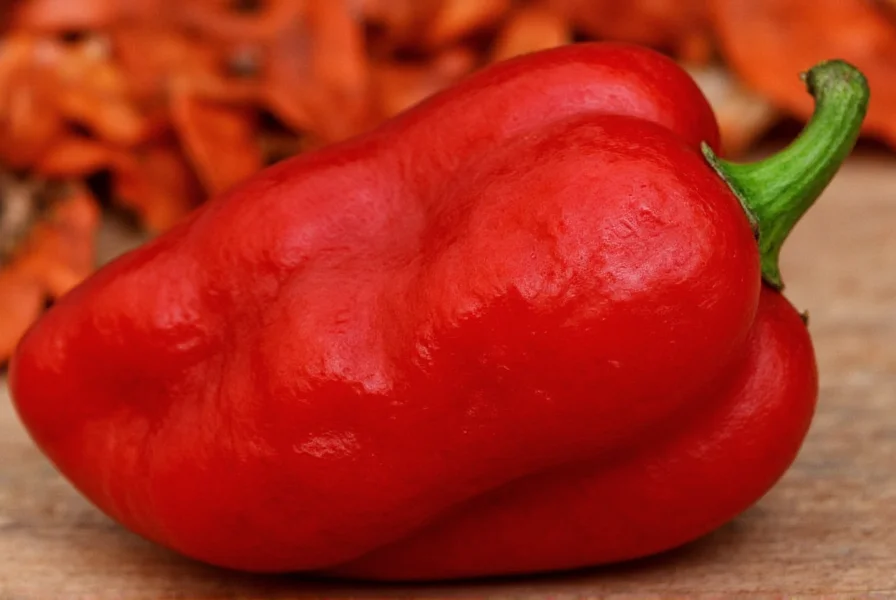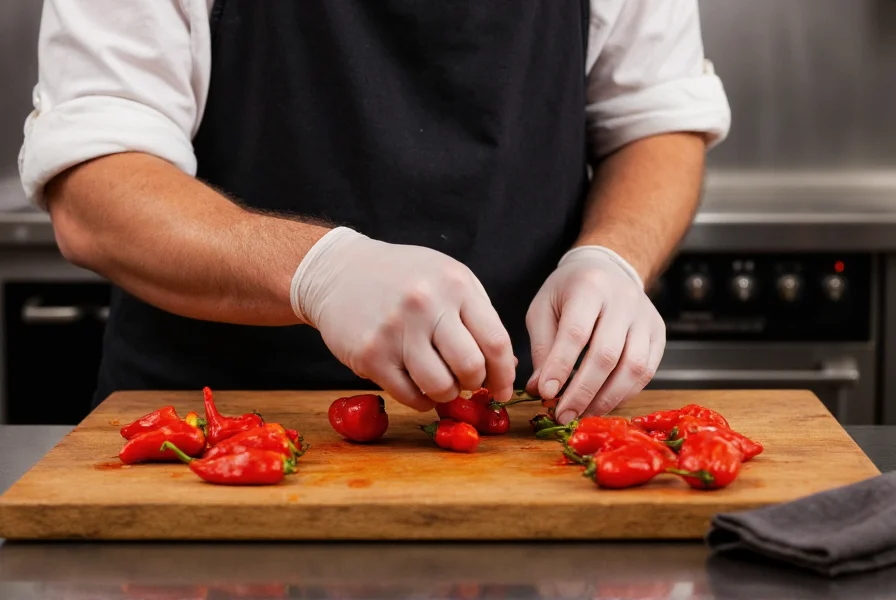If you've ever wondered how hot is the carolina reaper pepper, the answer lies in its extraordinary Scoville rating. This fiery fruit isn't just hot—it represents the pinnacle of cultivated capsaicin potency, with measurements that consistently exceed 1.5 million Scoville Heat Units (SHU). Understanding exactly how many scoville units is carolina reaper requires examining both its scientific measurement and real-world impact.
Measuring Extreme Heat: The Scoville Scale Explained
The Scoville scale, developed by pharmacist Wilbur Scoville in 1912, measures capsaicin concentration—the compound responsible for pepper heat. Originally determined through human taste panels, modern laboratories now use high-performance liquid chromatography (HPLC) for precise measurements, converting results to Scoville units.
For context, here's how the Carolina Reaper compares to other peppers:
| Pepper Variety | Scoville Heat Units (SHU) | Heat Relative to Jalapeño |
|---|---|---|
| Carolina Reaper | 1,400,000–2,200,000 | 275–440x hotter |
| Ghost Pepper (Bhut Jolokia) | 800,000–1,041,400 | 160–208x hotter |
| Habanero | 100,000–350,000 | 20–70x hotter |
| Serrano | 10,000–23,000 | 2–4.6x hotter |
| Jalapeño | 2,500–8,000 | Baseline |
The Carolina Reaper's Record-Breaking Journey
Breeder Ed Currie of PuckerButt Pepper Company spent years crossbreeding a Pakistani Naga pepper with a Red Habanero to create the Carolina Reaper. In 2013, it officially dethroned the Trinidad Moruga Scorpion as the world's hottest pepper according to Guinness World Records. While newer peppers like the Pepper X claim higher heat, the Carolina Reaper remains the most consistently verified superhot pepper available to consumers.

What Happens When You Eat a Carolina Reaper?
Consuming a Carolina Reaper triggers an intense physiological response. Within seconds, capsaicin binds to TRPV1 receptors, causing:
- Immediate burning sensation throughout the mouth and throat
- Profuse sweating and facial flushing
- Nasal discharge and watery eyes
- Increased heart rate (typically 20-40 BPM higher)
- Endorphin release creating a "pepper high"
While generally safe for healthy adults in small quantities, medical professionals warn that how dangerous is carolina reaper pepper depends on individual tolerance. Cases of thunderclap headaches and temporary stomach lining irritation have been documented with excessive consumption.
Practical Applications of Extreme Heat
Despite its fearsome reputation, the Carolina Reaper offers more than just heat. Many enthusiasts appreciate its complex flavor profile that includes:
- Fruity undertones reminiscent of cherries and apples
- Subtle smoky notes
- Floral hints before the heat intensifies
Chefs use it sparingly in hot sauces, rubs, and specialty dishes where what does carolina reaper taste like matters as much as its heat. The pepper also serves practical purposes in wildlife deterrents and certain medical research applications studying pain receptors.

Safety Guidelines for Handling Superhot Peppers
Proper handling prevents painful accidents when working with Carolina Reapers:
- Always wear nitrile gloves (latex won't protect against capsaicin)
- Avoid touching your face, especially eyes
- Work in well-ventilated areas to prevent inhaling capsaicin particles
- Use separate cutting boards and utensils
- Wash hands thoroughly with soap and water after handling
If you accidentally get capsaicin on your skin, use milk or oil-based products to break down the compound—water will spread it further. For eye exposure, flush immediately with saline solution.
Is the Carolina Reaper Right for You?
While is carolina reaper the hottest pepper in the world remains debatable among enthusiasts, its accessibility makes it the benchmark for superhot experiences. Home gardeners can grow these peppers with proper care, and hot sauce manufacturers widely use them in commercial products.
For those considering trying the Carolina Reaper, experts recommend starting with a tiny piece (1-2mm) and having dairy products nearby to neutralize the heat. Remember that individual tolerance varies significantly—what's manageable for one person might overwhelm another.
Frequently Asked Questions
How many Scoville units does a Carolina Reaper have?
The Carolina Reaper measures between 1,400,000 and 2,200,000 Scoville Heat Units (SHU), with an average around 1.6 million SHU. This makes it approximately 275 times hotter than a typical jalapeño pepper.
How does the Carolina Reaper compare to ghost peppers in heat level?
The Carolina Reaper is significantly hotter than ghost peppers. While ghost peppers range from 800,000 to 1,041,400 SHU, Carolina Reapers typically measure 1.4-2.2 million SHU, making them about 1.5-2 times hotter on average.
What does eating a Carolina Reaper feel like?
Eating a Carolina Reaper creates an immediate burning sensation that spreads from the mouth to the throat. Within seconds, most people experience sweating, facial flushing, watery eyes, and nasal discharge. The intense heat peaks at 2-5 minutes and can last 20-45 minutes, often followed by endorphin-induced euphoria.
Can Carolina Reaper peppers be dangerous to eat?
While generally safe for healthy adults in small quantities, Carolina Reapers can cause temporary health issues including severe stomach irritation, 'thunderclap' headaches, and in rare cases, esophageal tears from violent vomiting. People with gastrointestinal conditions should avoid them, and children should never consume superhot peppers.
How should I handle Carolina Reaper peppers safely?
Always wear nitrile gloves when handling Carolina Reapers, work in a ventilated area, and avoid touching your face. Use separate cutting boards and utensils, and wash hands thoroughly with soap afterward. If capsaicin contacts skin, use milk or oil-based products to remove it—water will spread the compound further.











 浙公网安备
33010002000092号
浙公网安备
33010002000092号 浙B2-20120091-4
浙B2-20120091-4